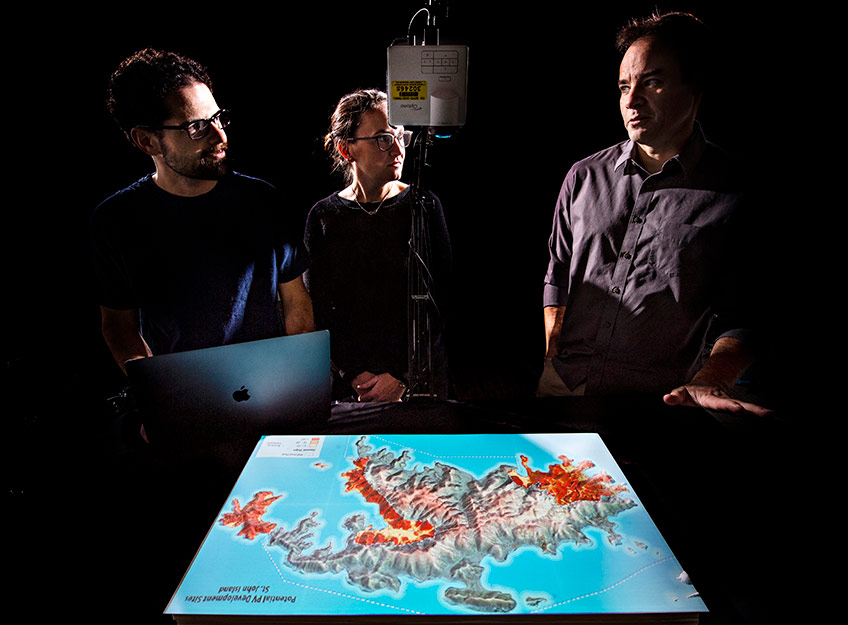Design, Simulation, and Control
NLR's computing resources allow our scientists and engineers to study the performance of wave energy systems at unprecedented levels of detail to enable the development of innovative and robust system designs.

Photo by Dennis Schroeder, National Laboratory of the Rockies
Coastal Structure Integrated Wave Energy Converters
NLR is researching coastal structure integrated wave energy converters to protect vulnerable coastal communities from erosion and storms while converting wave energy into electricity.
High-Performance Computing
NLR's computational science, high-performance computing, applied mathematics, visualization, and data accelerate process innovations, enhance reliability, and reduce risk across the energy ecosystem.
OpenFAST: Marine Turbine Simulation Tool
OpenFAST, an open-source tool that simulates marine energy turbines, is helping developers understand how their devices might perform in open water.
Variable Geometry and Controls
To reduce the cost of wave energy, we develop wave energy system technologies that can optimize power absorption and minimize peak loads and peak-to-average power using novel control strategies, like variable-geometry systems, which can change shape to produce more energy more efficiently.
Wave Array and System Integration Analysis
NLR designs numerical modeling tools to analyze and improve wave energy system integration with micro- and utility-scale grid systems as well as tools to optimize device array layout and performance in wave energy power plants.
Wave Energy Conversion Modeling
NLR develops open-source, computer-aided engineering tools and uses high-fidelity numerical modeling methods. These tools provide the wave energy community with state-of-the-art design and simulation capabilities needed to develop commercially viable technologies.
Contact
Share
Last Updated Dec. 7, 2025
